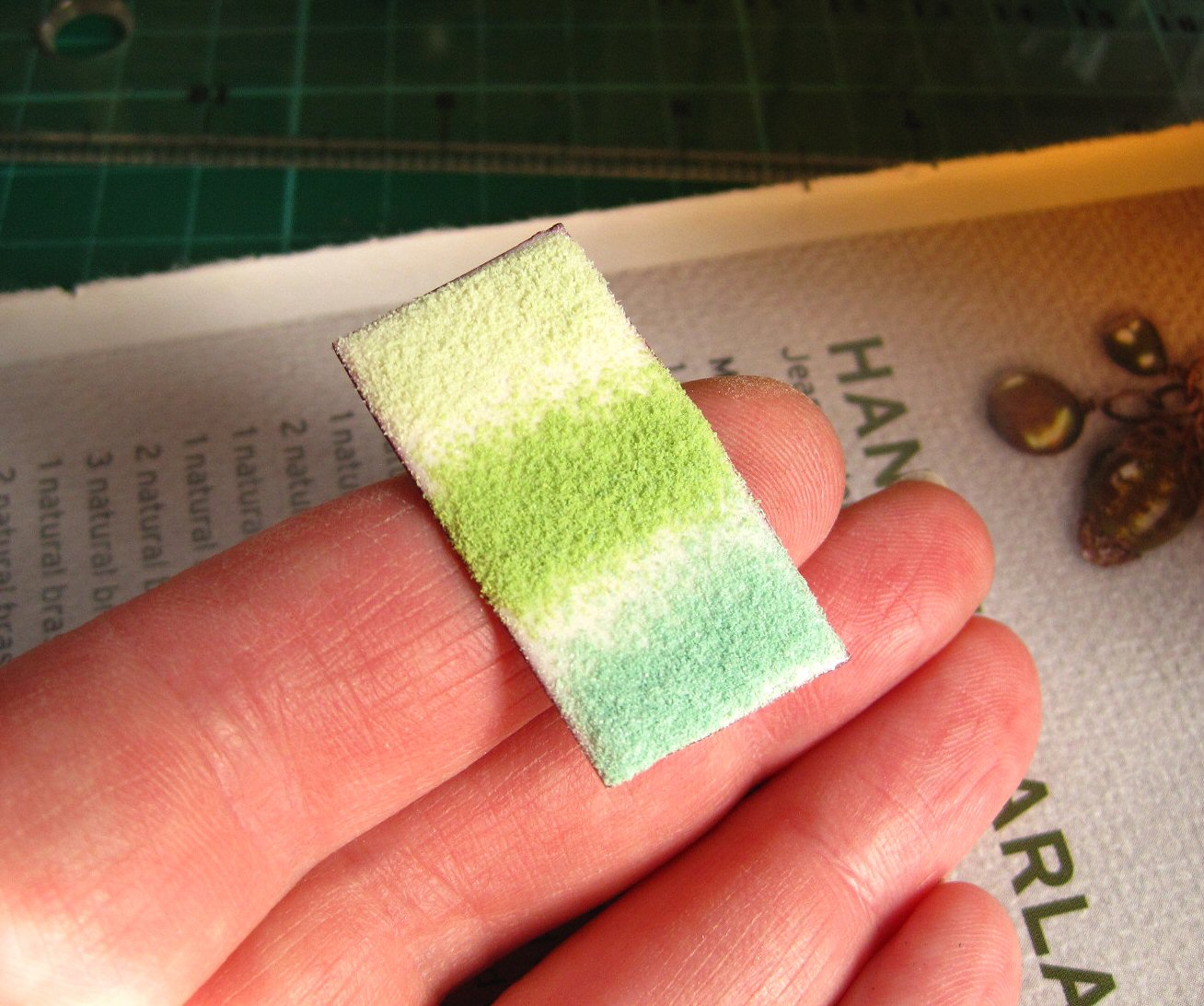To continue my current tiny obsession with torch enamelling and decorative things you can do with your enamelled jewellery, I thought I'd experiment with sgraffito. The word sgraffito means "scratched" in Italian and according the the Encyclopedia Britannica is "a technique used in painting, pottery and glass which consists of putting down a preliminary surface, covering it with another, then scratching the superficial layer in such a way that the pattern or shape that emerges is of the lower colour"
A friend sent me a copy of a bracelet tutorial {thanks Debs!} by Angela Gerhard who creates the most beautiful enamel jewellery decorated using sgraffito. I'd love to post a couple of photos of it here but I remember doing an enamel treasury on Etsy a while ago and seeing a little note on her shop page about her photos being copyrighted so I will respect that - although if you Google her you'll see lots of her jewellery photos everywhere!
I decided to have a go at sgraffito this week. I cut several pieces of 24g/0.5mm copper to practice on. Some of them are bigger pieces than I normally use but I wanted a bit of space to play. I counter enamelled them then enamelled the front - two in black, two in purple and three in cream.
In the Angela Gerhard tutorial the next step is to apply a layer of liquid enamel but as I don't have any yet I used Klyre Fire which I applied liberally with a brush.
I hope you can tear your eyes away from the ripped out magazine page featuring a step-by-step wirework necklace project I used to sift onto. I don't think I could have picked a brighter, more distracting background for this photo if I tried...
☺
The next step in the tutorial was to sift a layer of powder enamel on top of the liquid enamel. I sifted a layer of enamel onto the Klyre Fire and pressed it down gently with my finger.
I then used a variety of tools - an engineer's scribe, a fine brush and rubber tipped "things" I acquired a while ago to create the lines. The layer of enamel on this piece was too thick which results in a lot of the enamel powder piling up at the sides of the lines {a bit like snow when a snow plough has been through}. You then need to remove these little piles of enamel by using a bulb syringe {as in the tutorial} to gently blow them away or you can use a dampened brush. Otherwise they create thicker areas of enamel that take longer to fire.
I had another go using a cream base and a thinner layer of three greens. I left a gap between the different greens too then used a small brush to create the lines. It definitely helps to have a pot of water handy to clean the brush and a piece of kitchen towel to blot the brush on to keep it clean between doing each line. The damp brush picks up the particles of enamel too giving you a neater finish to the lines if that's the look you're aiming for.
I fired each piece then lined them up on my shed windowsill to photograph {top photo}. I then decided to etch them as I love the matt finish it gives. Here are the results...
What I've learned....
1.The first is I need to apply two layers of counter enamel if I want to make larger pieces. The counter enamel on a couple of the pieces took a bit of a battering but that could be due to the enamel on the front being too thick and taking longer than normal to fully fire.
2. A thinner top layer of powder enamel is better for achieving thinner lines.
3. I found drawing straight lines was easier with a brush than anything else.
4. I need a finer brush! The {cheap} brushes I buy seem to swell a bit when they get wet which doesn't make it easy to achieve neat lines.
5. Although I like bright colours I'm drawn more to the cream background than the black. I'm also trying hard to ignore the purple and green colour combo I created, it's hideous!
6. I need to let go of my inner neat-freak and just go with it. I learned that the more precise you try to be with some enamelling techniques the worse the end result looks.
7.The matt look is very cool. Very.
8. I need to practice more.
A lot more ☺









No comments:
Post a Comment